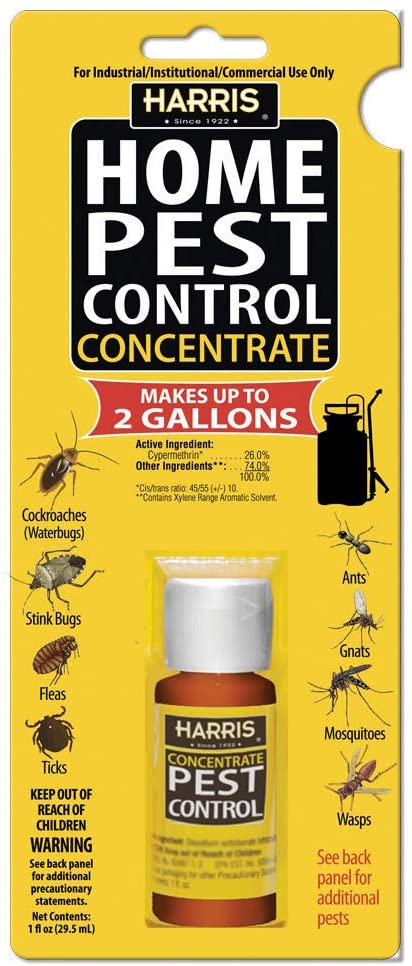Bed Pest Therapy Break Down: Comparing Chemical Vs. Non-Chemical Solutions
In the realm of bug control, specifically when taking care of the consistent issue of bed pests, the option between chemical and non-chemical therapy services can be a critical one. Both strategies use distinct benefits and drawbacks, influencing elements such as effectiveness, safety and security factors to consider, and overall price. By examining the nuanced details of each method, a more clear understanding of which course to seek in dealing with a bed pest infestation can be attained.
Performance of Chemical Therapies
Chemical therapies for bed insect invasions have been extensively recognized for their powerful and rapid efficiency in eradicating these parasites. When taking into consideration the performance of chemical therapies, it is vital to recognize that they can give a fast and complete solution to a bed insect trouble.
Moreover, chemical therapies have the advantage of offering recurring effects, suggesting that they can remain to remove bed insects even after the initial application. This residual activity is especially helpful in combating any possible re-infestations. Furthermore, the rapid activity of chemical treatments can bring relief to people facing extreme bed insect infestations, permitting them to gain back control of their home quickly.
Security Worry About Chemical Solutions
One critical element that requires careful factor to consider when making use of chemical remedies for bed insect treatment is guaranteeing the security of residents and the atmosphere. Direct exposure to particular chemicals made use of in bed pest treatments can lead to breathing issues, skin inflammation, or other adverse responses, particularly in individuals with pre-existing problems or sensitivities.
Moreover, the ecological effect of chemical services is another substantial consideration. Some pesticides made use of in bed insect treatments might be damaging to advantageous insects, wild animals, and communities if they leach into the soil or water systems. It is essential to make use of chemical treatments judiciously, adhering to safety standards, and taking into consideration less hazardous choices to minimize these dangers and ensure the risk-free and reliable administration of bed pest infestations.
Benefits of Non-Chemical Techniques
Thinking about the potential safety and security worries and ecological influence connected with chemical remedies for bed insect therapy, discovering non-chemical techniques offers a promising option with numerous distinctive benefits. Non-chemical therapies are environmentally pleasant, as they do not add to air or water pollution, making them a sustainable selection for bug control.
Furthermore, non-chemical services can be reliable in targeting bed bugs, consisting of hard-to-reach locations where chemical treatments might not permeate - A1 bed bug exterminator charlotte. Methods such as warmth treatment, vacuuming, steam cleaning, and cushion encasements offer comprehensive removal without the usage of hazardous chemicals.
Limitations of Non-Chemical Treatments

Additionally, non-chemical therapies commonly require numerous applications to accomplish successful removal. This can be time-consuming and might not always assure total removal of all bed pests and their eggs, especially in hidden or hard-to-reach locations.
In addition, the success of non-chemical therapies heavily relies upon appropriate execution and thoroughness, which can be testing for people without professional experience. Poor application of non-chemical approaches might cause incomplete obliteration, causing relentless infestations and the requirement for added treatments.
As a alpha pest control result, while non-chemical treatments have their benefits, it is important to acknowledge these restrictions and consider them when identifying one of the most reliable technique for managing bed bug infestations.
Cost Comparison: Chemical Vs. Non-Chemical Options
Provided the limitations connected with non-chemical therapies, an essential aspect to examine in the context of bed pest administration is the cost comparison in between chemical and non-chemical alternatives. Chemical therapies commonly entail the application of pesticides by experts, which can vary from $250 to $900 per space, relying on the extent of the infestation and the dimension of the location to be dealt with. In comparison, non-chemical treatments like heat therapy or heavy steam can be extra costly, with prices varying from $1,000 to $6,000 for an entire home. While the first price of chemical treatments may seem lower, multiple therapies may be required to completely get rid of the infestation, potentially enhancing the total price. On the other hand, index non-chemical options may give a much more green and sustainable option, although they can be cost-prohibitive for some people. Ultimately, when thinking about the price of bed bug therapy options, it is essential to evaluate the upfront costs against the effectiveness and lasting sustainability of the chosen approach.
Verdict

Considering the potential security worries and environmental influence connected with chemical solutions for bed insect treatment, checking out non-chemical strategies offers an appealing choice with a number of distinct benefits.Provided the constraints associated with non-chemical treatments, an essential aspect to review in the context of bed insect monitoring is the price contrast between chemical and non-chemical choices. In comparison, non-chemical treatments like heat treatment or heavy steam can be a lot more pricey, with costs ranging from $1,000 to $6,000 for an entire home. While the initial cost of chemical treatments may seem lower, several treatments may be needed to completely remove the invasion, possibly boosting the general expense.In final thought, when contrasting chemical and non-chemical bed insect therapy choices, it is important to consider effectiveness, safety and security, advantages, constraints, and price.